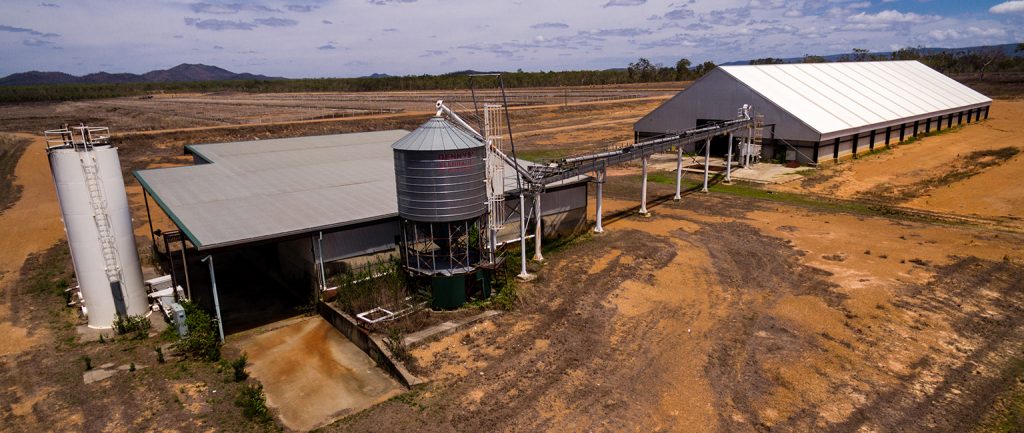Forgotten farm ready to return

If you didn’t know better, you’d swear this cattle yard had only just clocked off for the day.
With large sheds, an operational 70-tonne weigh bridge and yard upon fenced-off yard of cattle-ready pens, the Kimalo feedlot appears as a modern ghost town in far north Queensland’s fertile agricultural region.
But it could soon be brought to life once more.
The property, abandoned after its owner, sugar-growing giant MSF Sugar, bought the land years ago as part of a larger property and turned the surrounding acreage to sugarcane production, is on the market and ready to return to its former use.
Colliers International’s Stacey Quaid and Rawdon Briggs are marketing the 220ha property, which comes with a feedlot licence for 10,000 cattle, after a recent deal to sell it fell through.
“The property has been effectively on hold for some time due to a previous sale agreement, however, as that sale has failed the owners have instructed the property be formally offered via a national campaign to establish its market value and now be sold,” Quaid says.

The feedlot features 64 cattle pens.
The feedlot, designed as a cattle feeding facility to service Cape York, the lower Gulf of Carpentaria and Queensland’s western stations, has rarely been used for that purpose after being built 12 years ago.
Quaid says MSF Sugar had no need for the feedlot and for years left it unused, but now wants to sell.
“They basically bought it to operate off the adjoining land … but they’re selling this as it’s a surplus asset,” he says.
“While they’ve had it they haven’t operated it as a feedlot, (because) their interest was in developing the rest of the land.”
“The feedlot hasn’t been touched or damaged since it was turned off.”

The Kimalo feedlot is preserved as it was on the day it was sold.
The feedlot licence is expandable to 20,000 head of cattle, which could be accommodated in the facility’s 64 existing pens.
Quaid says the strength of Australia’s cattle market boosted the business case for a fully operational feedlot in the region.
“The cattle industry at the moment is at probably one of its strongest points and this is really a unique opportunity through a series of circumstances that have allowed it to come back into the market space, with such a facility and room to expand,” he says.
Briggs adds: “We have seen substantial growth in both domestic and international demand for Australian beef, and the north Queensland beef cattle market has experienced strong live weight prices both at local sale yards and for export, making the sale release timing ideal for a new operator. “







